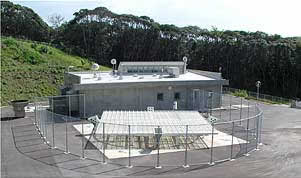
Wind Profiler Radar (WPR) at the Ogimi Wind Profiler Facility
(128°09'32" E, 26°40'41" N, 225 m MSL)

400MHz-WPR

Principles of Wind Profiler Radar (WPR)
A WPR is a ground-based radar that measurers the vertical profiles of wind velocity, clear air turbulence, and rainfall rate; these measures are derived from signal intensity and Doppler frequency shift of the radio waves returned from radio scatterers (such as atmospheric turbulence and precipitation particles).
The WPR can continue automated observations within time intervals as short as several minutes, surpassing the performance of conventional balloon (radiosonde) observations.
Atmospheric turbulence and precipitation particles act as scatterers.
|